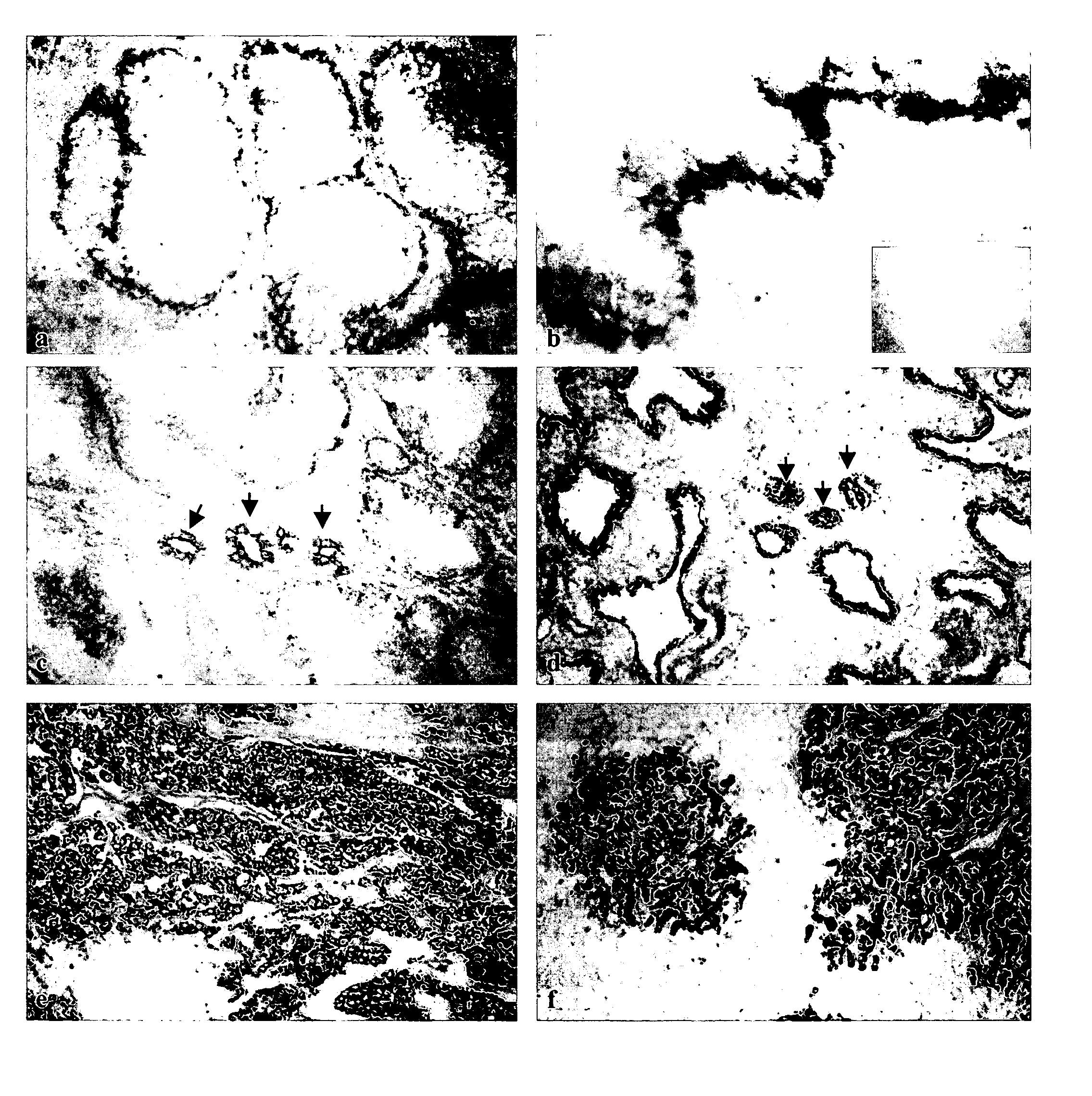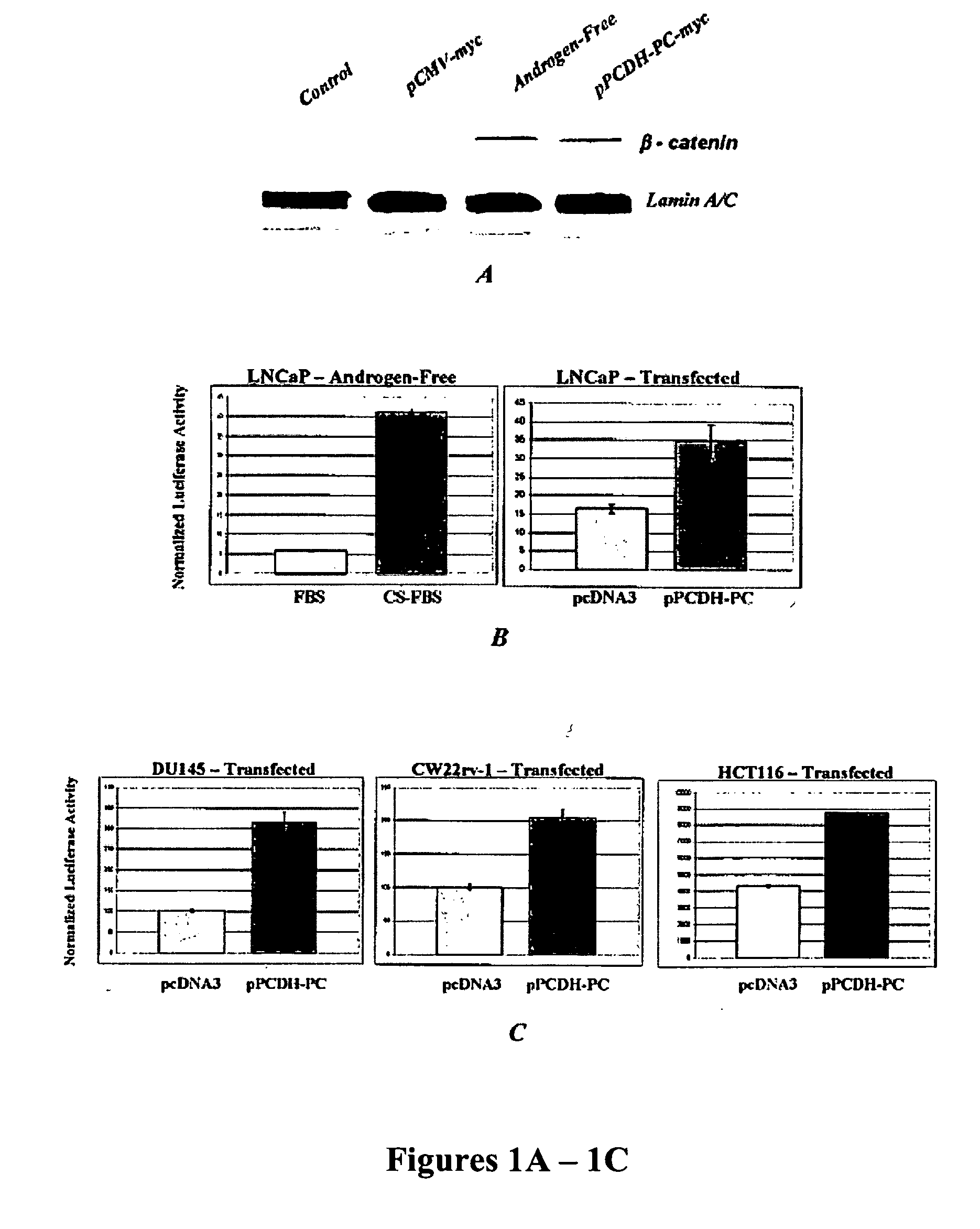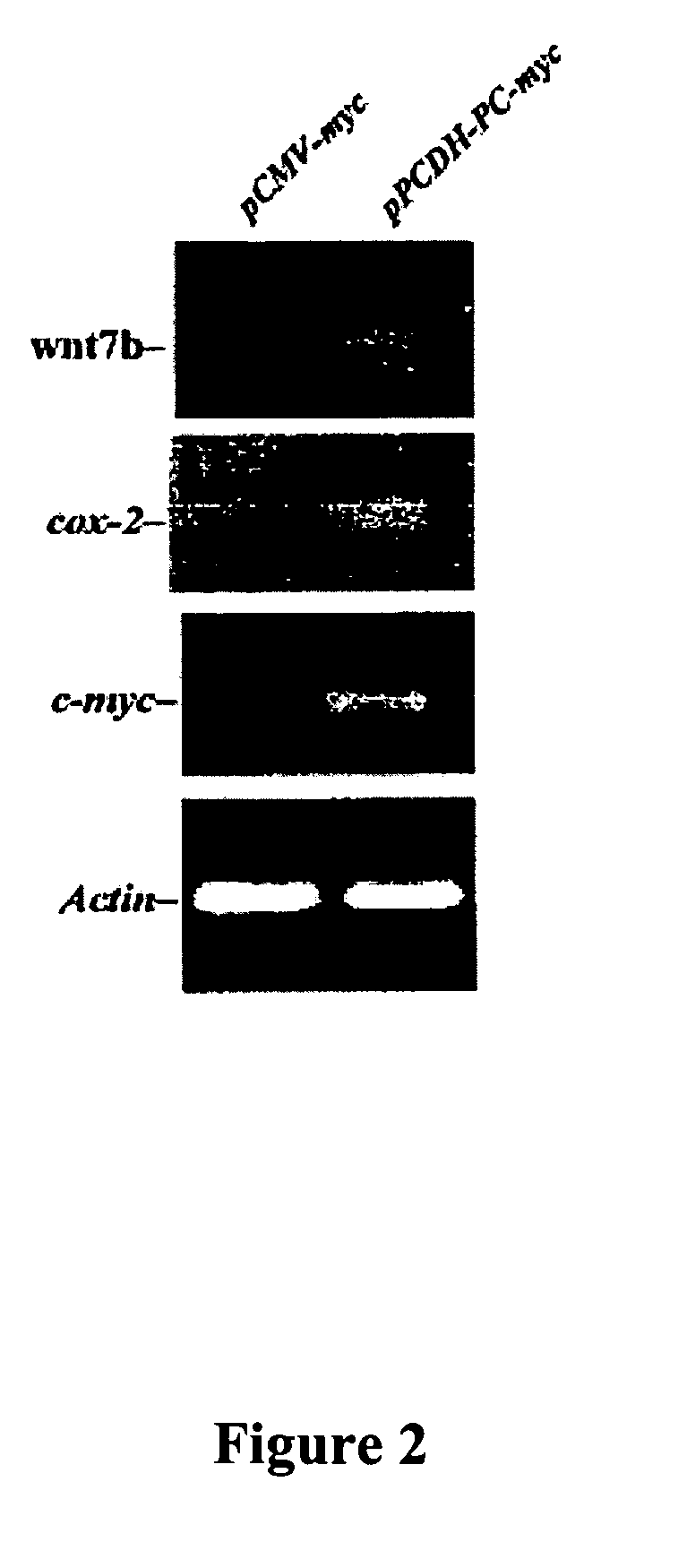Methods to treat or prevent hormone-resistant prostate cancer using siRNA specific for protocadherin-PC, or other inhibitors of protocadherin-PC expression or activity
a technology of procadherin-pc and sirna, which is applied in the direction of dna/rna fragmentation, peptide/protein ingredients, depsipeptides, etc., can solve the problems of relative high morbidity and mortality of advanced disease, and achieve the effect of inhibiting the expression of protocadherin-p
- Summary
- Abstract
- Description
- Claims
- Application Information
AI Technical Summary
Benefits of technology
Problems solved by technology
Method used
Image
Examples
example 1
A Human- and Male-Specific Protocadherin That Acts Through the Wnt Signaling Pathway to Induce Neuroendocrine Transdifferentiation of Prostate Cancer Cells
[0166] Protocadherin-PC(PCDH-PC, pro-PC or PCDH-Y) is a gene product that is selectively expressed in apoptosis- and hormone-resistant human prostate cancer cells. The gene encoding PCDH-PC is on the human Y-chromosome in a region that was translocated from the X-chromosome during the evolutionary transition from primates to humans. Compared to its X-homologue, PCDH-PC has a small deletion in its coding sequence that removes the signal sequence and the protein encoded by this gene is cytoplasmically localized. PCDH-PC also has a small serine-rich domain in its C-terminal region that is homologous to the β-catenin binding site of classical cadherins and hormone-resistant variants of prostate cancer cells that express PCDH-PC have high levels of β-catenin protein in their nuclear fractions consistent with evidence that these cells ...
example 2
Overexpression of Protocadherin-PC mRNA in Hormone-Resistant Human Prostate Cancer
[0190] The characterization of a novel gene product, protocadherin-PC(PCDH-PC), shows that it is expressed by apoptosis-resistant variants of the human prostate cancer cell line, LNCaP. This Example analyzes whether transfection of the parental LNCaP cells with PCDH-PC induces a state of hormone-resistance. LNCAP cells transfected with PCDH-PC were tested for their ability to form tumor xenografts in castrated male nude mice. The Example also provides characterization of PCDH-PC mRNA expression level and localisation in human prostate and prostate cancer (CaP) tissues. PCDH-PC mRNA expression and its localisation were studied by semi-quantitative RT-PCR and by in situ hybridization (ISH) performed on normal prostate, BPH, untreated CaP, hormone-treated CaP and hormone-resistant CaP.
[0191] In contrast to control-transfected cells, PCDH-PC transfected LNCaP cells were able to form tumors in castrated m...
example 3
Protocadherin-PC(PCDH-PC) Influences the Akt / Protein Kinase B Cell Signaling Pathway that Regulates Survival of Prostate Cancer Cells
[0215] Akt / Protein Kinase B is a serine / threonine kinase protein that lies within the Phosphotidyl-Inositol 3-Kinase (PI3-Kinase) cellular signaling pathway that is responsive to insulin-like growth factor stimulation. Stimulation of PI3-Kinase results in phosphorylation of Akt, activating its ability to phosphorylate several other proteins downstream in this signaling pathway (such as MDM2, Forkhead transcription factor, caspase 9 and bad) that are important regulators of cellular responsiveness to apoptotic stimuli. Highly phosphorylated Akt often corresponds with a cell that is resistant to apoptosis and more likely to undergo proliferation. Indeed, there is increasing evidence that increased Akt phosphorylation is a biomarker of the most aggressive forms of human prostate cancer (Paweletz et al., 2001; Malik et al., 2002; Ayala et al., 2004; Assik...
PUM
| Property | Measurement | Unit |
|---|---|---|
| pH | aaaaa | aaaaa |
| pH | aaaaa | aaaaa |
| pH | aaaaa | aaaaa |
Abstract
Description
Claims
Application Information
 Login to View More
Login to View More - R&D
- Intellectual Property
- Life Sciences
- Materials
- Tech Scout
- Unparalleled Data Quality
- Higher Quality Content
- 60% Fewer Hallucinations
Browse by: Latest US Patents, China's latest patents, Technical Efficacy Thesaurus, Application Domain, Technology Topic, Popular Technical Reports.
© 2025 PatSnap. All rights reserved.Legal|Privacy policy|Modern Slavery Act Transparency Statement|Sitemap|About US| Contact US: help@patsnap.com



